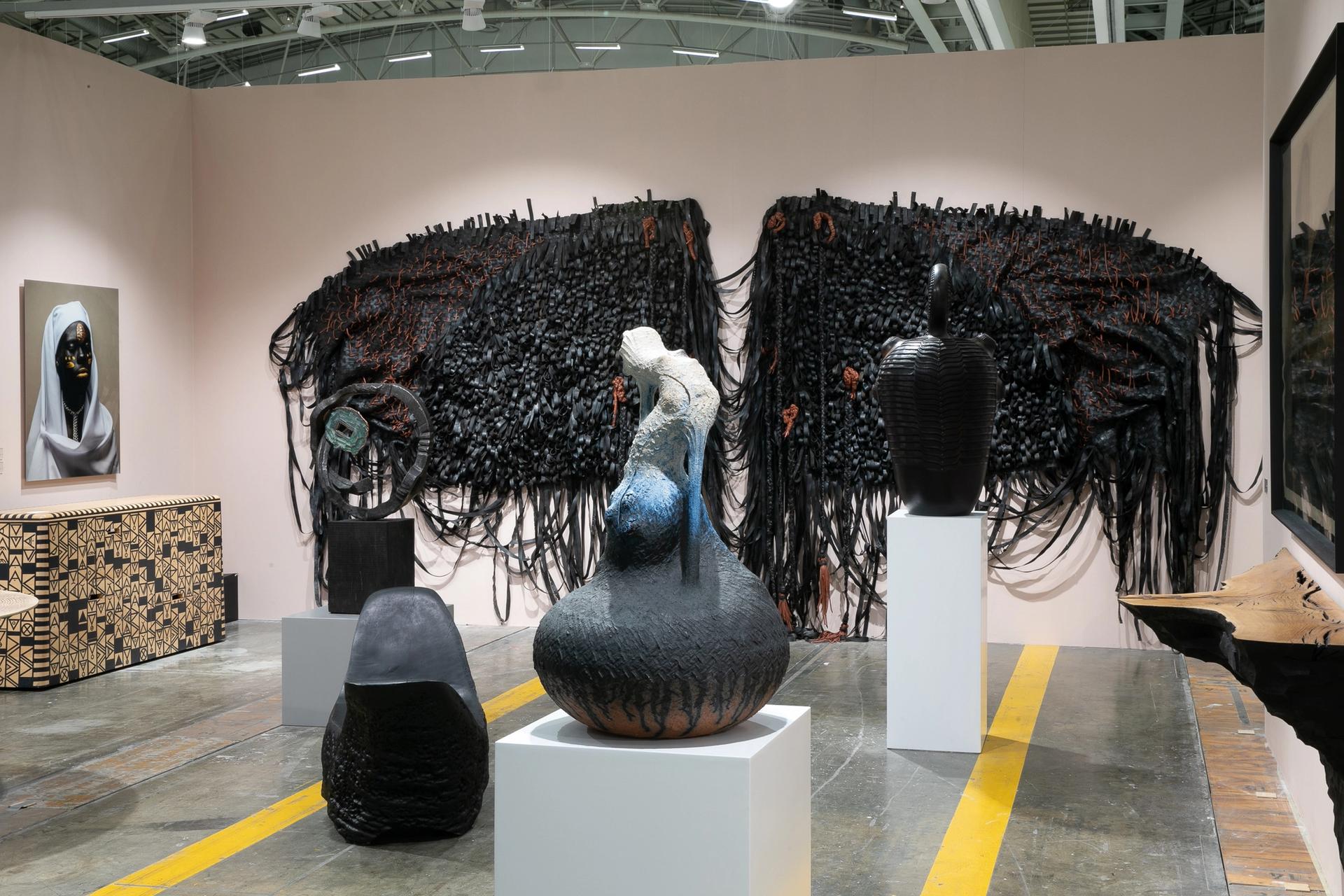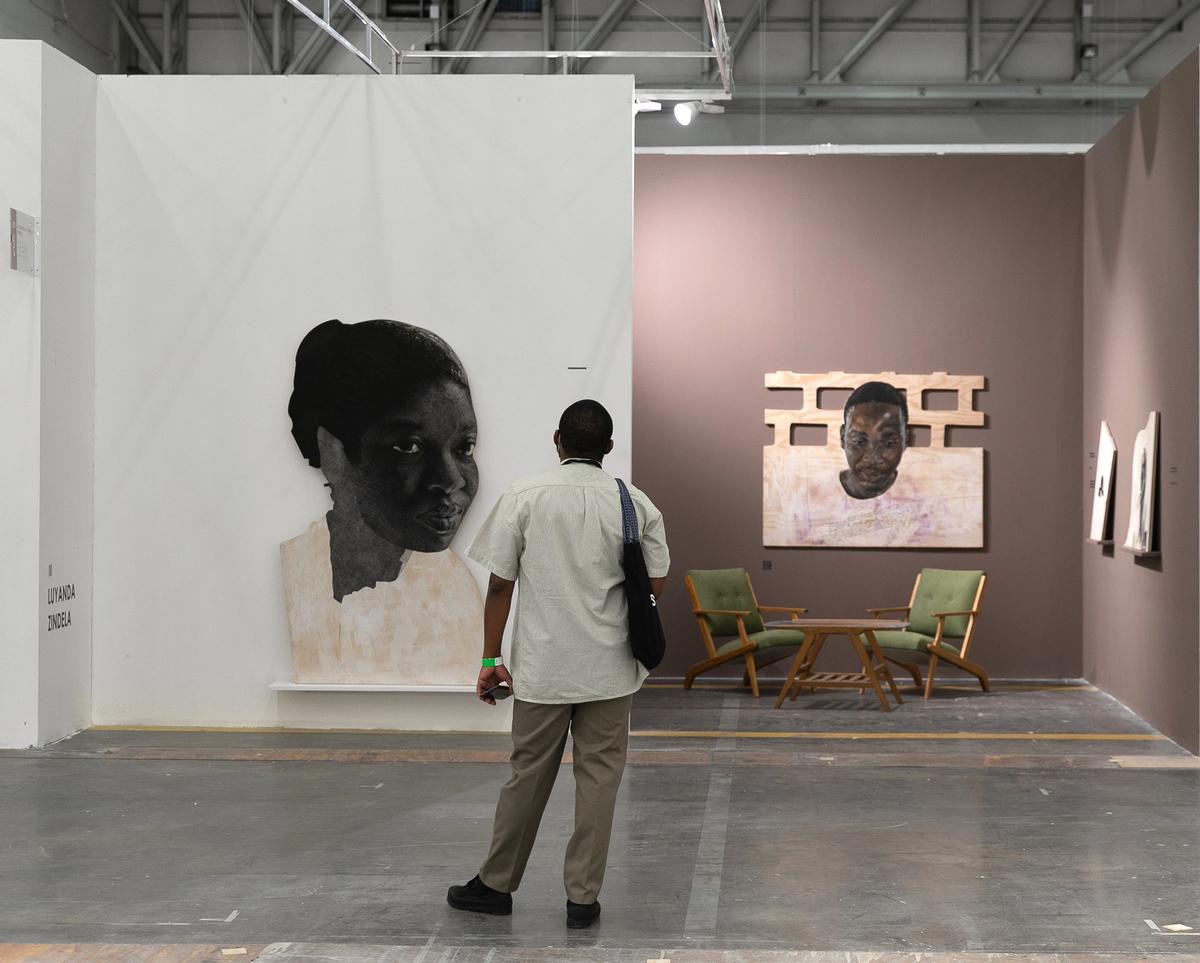In the run-up to the opening of the Investec Cape Town Art Fair (ICTAF, 18-20 February), local dealers were anxious. Would European collectors attend?
The fair, established in 2013, started as a casual summer event geared for locals—visitors often sported shorts and sandals. However, once it was acquired by the Italian events company, Fiera Milano, in 2016, it quickly became a more international fair that brought Italian galleries and collectors to South Africa’s shores. In 2020, some local art dealers reported that all of their sales at the fair were to international collectors.
With South Africa currently on a red travel status in Italy, Italian collectors—and galleries—were very thin on the ground at the Cape Town International Convention Centre (CTICC), where the fair has been annually held since Fiero Milano took control.
In 2020, 13 galleries from Italy (and six from Belgium) participated in the fair, while this year only three stands represented Italy, with one from Belgium.
However, the pandemic might not be the primary reason for this. As Africa’s largest art fair, with galleries from Angola, Zimbabwe, Tunisia, Egypt and Morocco, showing alongside South African galleries, few collectors arrive here looking to buy European art, which many of the Italian galleries were offering. This year, the Italian galleries that did return were those that featured or focused on South African artists such as the Milan-based Osart, with a stand dedicated to works by Katharien De Villiers.
Reminiscent of pre-Covid times, the vernissage on the Thursday evening (17 February) was packed, and the organisers say 23,000 visitors came in total, up from 22,000 in 2020. However, there were fewer exhibitors—around 70, compared to 100 in 2020.
“A few European galleries cancelled as they were scared of being stuck in South Africa. They also did not want to go through the quarantine period upon return. The same reasons apply to those who would have usually applied and did not for this edition,” says Laura Vincenti, the director of CTAF.

Southern Guild's stand at the Investec Cape Town Art Fair featured a large hanging work by the Congolese artist Patrick Bongoy.
Photo: Stephanie Veldman
For many of the African-based dealers, this was not their first "live" fair since the pandemic began, having participated in the 1:54 Contemporary African Art Fair in London, or in one of the fairs in Miami in December. The Cape Town-based Whatiftheworld gallery, buoyed by a sell-out stand of works by the rising South African artist Sthenjwa Luthuli at Untitled Art Miami Beach, brought to ICTAF a large-scale wood-carved quadtych by the artist, titled Spirits by Names. It was one of few large-scale or visually arresting works on show—on the whole, dealers seemed to play it safe bringing mostly figurative paintings to the fair.
Goodman Gallery reported interest in a major new work on paper by William Kentridge and Samson Kambalu’s Antelope, a maquette for a sculpture planned for the Fourth Plinth in London's Trafalgar Square. Both eventually sold, the Kentridge for $450 000 and the Kambulu for £30 000 ($40,900).
“South Africa has endured two very tough years with lockdowns and ongoing travel restrictions, so it was incredibly rewarding to see many international collectors and friends travel over for Cape Town Art Week,” says Liza Essers, the director of Goodman Gallery.
However, most of the dealers on the ground observed that the impact of fewer international collectors resulted in sales of smaller, lower priced works, by younger or emerging artists. This sentiment was borne out through the trend in sell-out works or stands.
Bonolo Kavula's characteristic "dot" works made from African textiles sold out at Smac Gallery’s stand. Feni Chulumanco’s figurative paintings, at the Ebony/Curated stand in the Tommorow/Today section, sold out on the first night, though with some priced at $9,600 they could not be deemed inexpensive.
“There is a thirst for pan-African art,” observes Marc Stanes, the director of Ebony/Curated.
Speculation on emerging artists might have accounted for the sell-out display of works by Abdus Salaam presented by Cape Town’s THK gallery.
South African galleries notoriously make better sales at this fair compared to galleries from other parts of Africa. This was particularly the case this year, given the bulk of visitors to the fair were South African. Nairobi-based Circle Art gallery, Komezart, a newly established online gallery from Rwanda and the Mashrabia gallery from Egypt all reported to have made only a few sales. African Arty, a Casablanca-based gallery, and newcomer to this fair, sold a large painting by the Cameroonian artist Franck Kemang Noah on the opening night. Noah’s paintings of African spiritualists exorcising western art centres do well on auctions dedicated to African art in France and the UK.
The most impressive sale of the fair was an historical work by a favourite at South African auctions, JH Pierneef. This work on paper, titled Matlala’s Mountain, Transvaal (1933), was sold by a new South African art consultantcy, Vault Research, headed by Phillippa Duncan. She would not be drawn on the precise amount this rare work fetched, but noted that “one would be left with very little change from R20m ($1.3m).”
- Mary Corrigall is a Cape Town-based art journalist and research consultant


